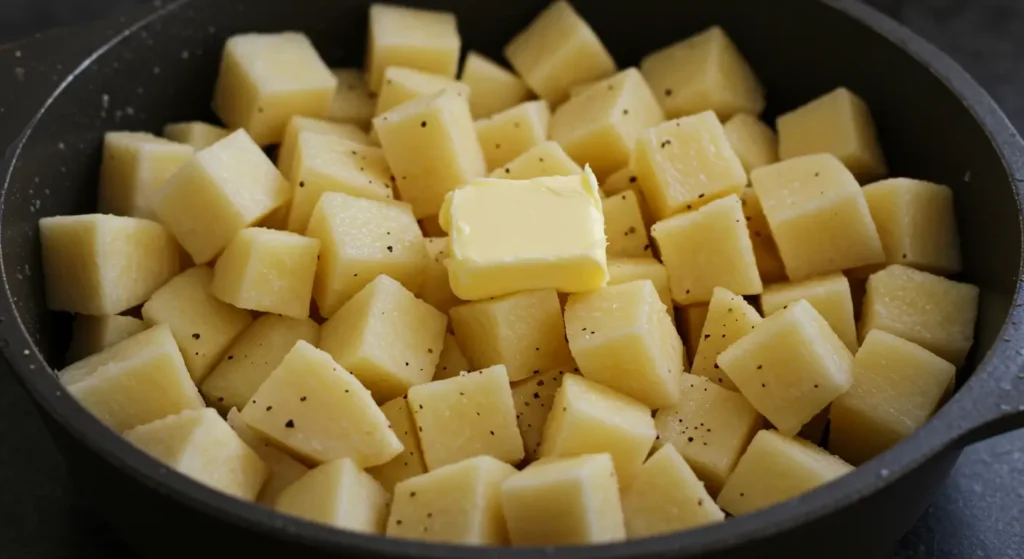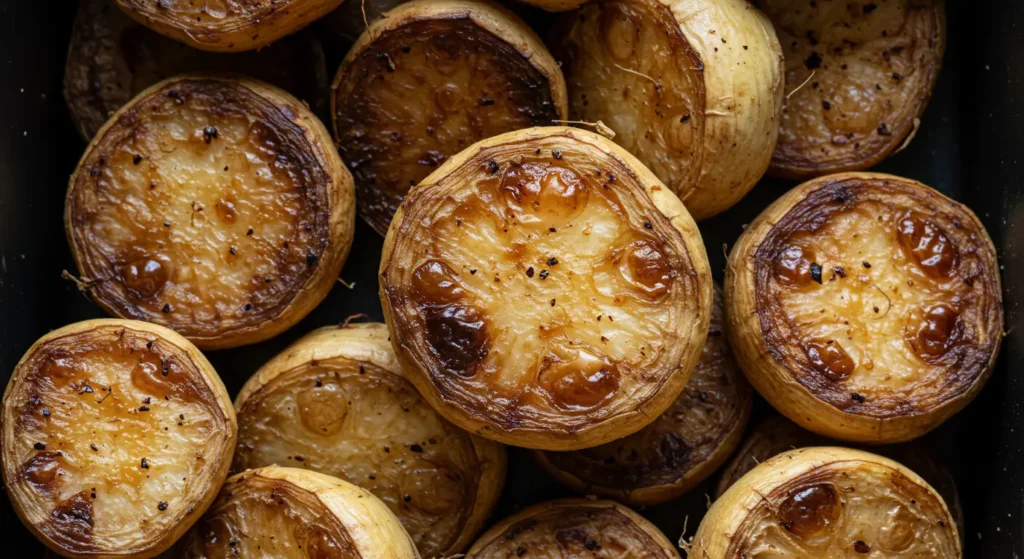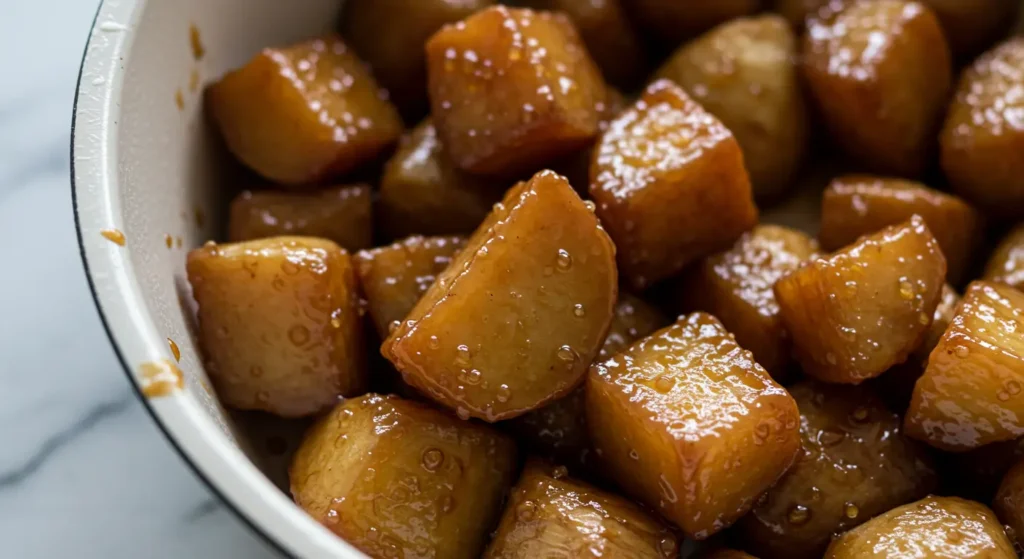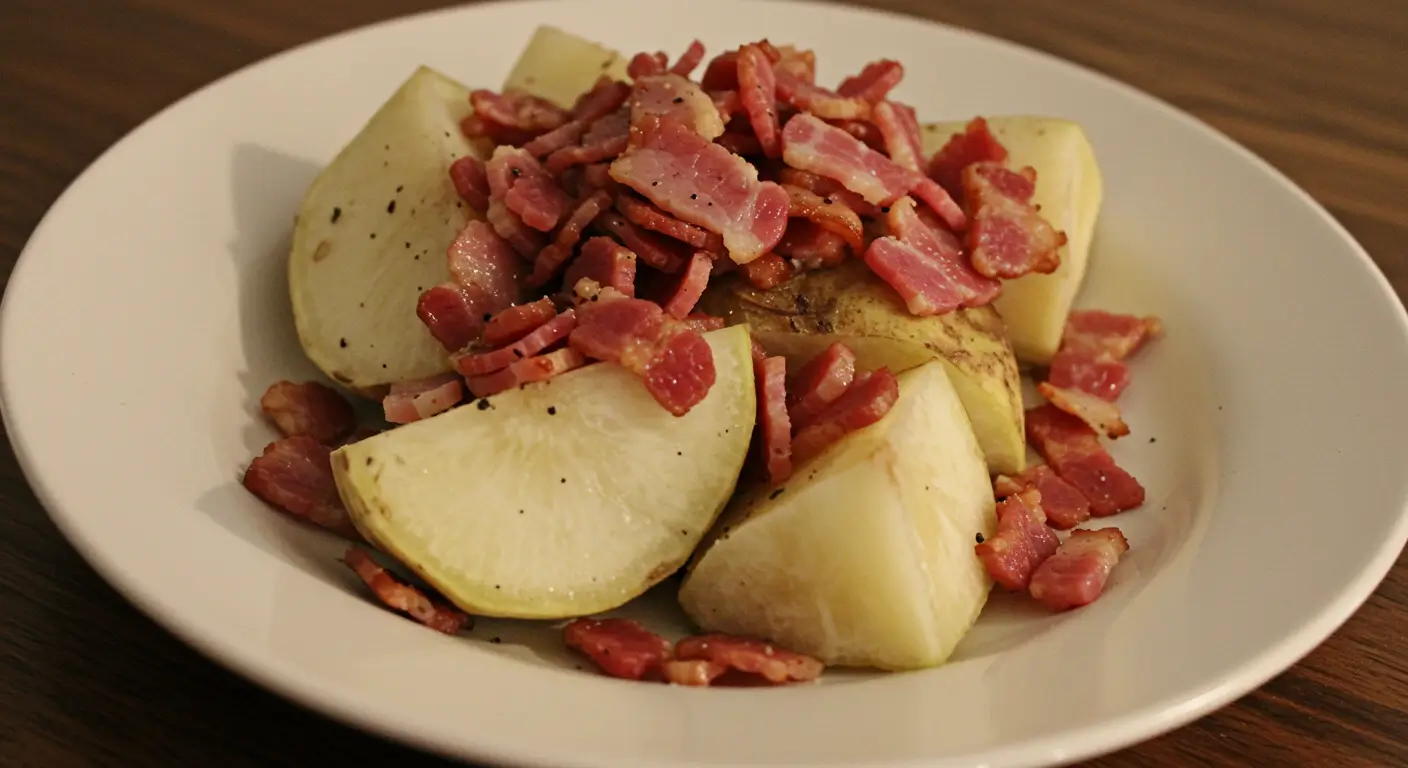Delicious Savory Southern Rutabagas
Table of Contents
Southern rutabaga is a nutrient-packed root vegetable that’s often underrated but deeply rooted in tradition and rich in flavor. This comprehensive guide explores the benefits of growing rutabagas in the South, offering home gardeners a way to enhance their harvests with this resilient and adaptable crop. Thriving in warm climates, rutabagas are a perfect addition to any Southern vegetable garden and can be used in a variety of delicious dishes.
Whether you’re an experienced gardener or just starting, this guide simplifies the process of cultivating rutabagas for fresh, homegrown produce. Discover essential growing techniques, expert tips for a bountiful harvest, and both classic and modern recipes to enjoy this hearty vegetable. By the end, you’ll see why Southern rutabaga is a must-have for your garden and kitchen.
Key Takeaways
- Root vegetables like rutabaga offer resilient options for Southern gardens.
- Mastering growing rutabagas boosts your harvest success in warm climates.
- Traditional and modern recipes highlight the vegetable’s versatility.
- This guide covers planting, care, and cooking methods for all experience levels.
- Southern rutabaga adds unique flavor and nutrition to regional cuisine.
Understanding Rutabagas: History and Importance in Southern Cuisine
Rutabagas have a rich rutabaga history from Europe. They started in Scandinavia and northern Europe in the 1600s. They are a mix of cabbage and turnips.
These veggies grew well in cold weather. They were key for early farmers. Their European rutabaga origins helped them spread worldwide, reaching America through immigrants.
How Rutabagas Became a Southern Staple
Settlers brought rutabagas to America, finding the South’s climate perfect. Over time, they became a big part of southern cuisine rutabagas. They lasted long, helping with food shortages in winter.
Southern cooks used them in stews, casseroles, and sides. They mixed them into local traditions.
Distinguishing Rutabagas from Turnips
Rutabagas and turnips are often mixed up, but they’re different. Here’s how to tell them apart:
| Category | Rutabaga | Turnip |
| Appearance | Purple-topped, denser flesh | Whiter skin, lighter interior |
| Flavor | Sweet, earthy | Milder, slightly peppery |
| Common Uses | Mashed, roasted, or in stews | Pickled, boiled, or in salads |
- Rutabagas have a firmer texture than turnips.
- Look for their yellowish skin at markets—they’re often larger too.
Knowing these differences helps you choose the right root for your next Southern dish.
Southern Rutabaga Recipes
Glazed Rutabagas
Ingredients:
- ¼ cup butter
- 6 tablespoons brown sugar (adjust to taste)
- 1 cup hot water
- 6 tablespoons soy sauce
- 1 large rutabaga, peeled and cubed
Directions:
In a large skillet, melt the butter over low heat. Add the brown sugar and stir until fully dissolved. Pour in the hot water and soy sauce, then increase the heat to medium-high, bringing the mixture to a boil.
Add the cubed rutabaga and let it return to a boil. Reduce the heat to low and let it simmer uncovered, stirring occasionally, until the liquid is fully absorbed—about 45 minutes. Serve warm.
Buttered Rutabagas
Ingredients:
- 1 large rutabaga (about 8 cups, cubed)
- ½ cup unsalted butter
- 2 teaspoons salt
- 2 teaspoons granulated sugar
- ½ teaspoon ground pepper
Instructions:
- Select a firm rutabaga with no soft spots. These are typically coated in wax to prevent damage during transport.
- Use a large knife for a big rutabaga or a paring knife for a smaller one. Slice off both ends to create a stable surface for peeling.
- Peel off the outer layer, removing all wax coating.
- Cut the rutabaga into 1-inch cubes.
- Place the cubes in a pot and cover them with cold water. Add the butter, salt, pepper, and sugar.
- Cover the pot and bring the water to a boil. Reduce heat to medium and let simmer for 15–20 minutes, or until the rutabaga is tender.
- Taste and adjust seasoning as needed. Serve warm.
Getting Started: The Best Growing Conditions for Rutabagas
Mastering rutabaga growing conditions in the South means adapting to its unique challenges. These cool-season crops do well in southern climates if planted right to dodge summer heat. Start by making the soil rich in organic matter.
Rutabaga soil requirements call for well-draining, fertile soil with a pH of 6.0 to 6.8. If your soil is clay-heavy, add compost or peat moss. This helps with drainage and keeps nutrients in.
Timing is key for southern climate rutabagas. Plant seeds 10–12 weeks before the first fall frost. Use this plant rutabagas South calendar for the best time:
- Upper South: Sow seeds in late July to early August
- Deep South: Plant in late August to September
- Coastal Regions: Aim for September to October
Keep the soil moist to avoid bitter roots. Mulch with straw or pine needles to keep moisture in and soil temperature steady. Watch out for aphids and flea beetles. Handpick them or use insecticidal soap.

Space plants 12–18 inches apart for good airflow. Even small gardens can grow rutabagas. Use 12-inch deep containers with drainage holes for tight spaces.
Feed with balanced fertilizer every six weeks to help them grow. Don’t overwater during maturation to prevent cracking. These steps make southern soil perfect for rutabaga growing conditions, ensuring sweet, tender roots even in the heat.
Southern Rutabaga Varieties You Should Know
Choosing the right rutabaga varieties South is key for a great harvest. Here are four top picks for your area’s climate and taste preferences.
American Purple Top Rutabaga
The Purple Top rutabaga stands out with its bright purple shoulders and yellow flesh. It grows well in 90 days, even with changing weather. Its firm texture is great for mashing or roasting.
Laurentian Varieties
- Laurentian was made in Canada and does well in Southern soil, thanks to its disease-resistant roots.
- It keeps for up to 6 months in cool places like basements or root cellars.
- Ready in 100 days, it tastes sweet and mild.
Heirloom Southern Varieties
“These seeds hold our ancestors’ wisdom,” says Appalachian gardener Clara Mae, who has grown Tennessee Green since 1920.
Heirloom rutabagas like Tennessee Green and Georgia Orange have deep flavors and can handle drought. They’re perfect for those who value heritage and don’t need modern hybrids.

Heat-Tolerant Performers
For hot summers, choose heat-tolerant rutabagas like:
- Carolina Gold: 85 days | Creamy texture with citrus notes
- Florida Frost: 95 days | Thick skin keeps out Southern pests
| Variety | Days to Maturity | Flavor Profile | Storage | Key Trait |
| American Purple Top | 90 | Crisp, mild | 3 months | Consistent yields |
| Laurentian | 100 | Sweet, nutty | 6 months | Excellent storage |
| Tennessee Green | 105 | Earthy, peppery | 4 months | Drought resistance |
| Carolina Gold | 85 | Citrusy | 2 months | Heat tolerance |
Harvesting and Storing Your Rutabaga Crops
Timing and storage are key to keeping your rutabaga fresh. Follow these steps to keep your harvest fresh and avoid common problems in southern climates.
When to Harvest for Peak Flavor
In the South, rutabaga is ready to harvest 90–100 days after planting. Look for 3–5-inch diameter roots before digging. Southern climates have warm soil, so check roots weekly once they’re close to being ready.
A light frost makes rutabaga sweeter. So, wait until after a frost to harvest in cooler parts of the South.
- Check diameter: 3–5 inches for best texture
- Wait until soil temps drop below 60°F for natural sweetness
- Post-frost harvesting boosts flavor in northern Southern zones
Proper Storage Techniques for Long-Term Freshness
| Method | Steps | Storage Tips |
| Refrigeration | Wrap in damp towels; store in crisper drawer | Keeps 1–2 months |
| Curing | Leave roots in garden 2–3 days post-harvest | Builds resilience to rot |
| Sandbox Method | Bury in moist sand in a cool basement or cellar | Optimal for 4–6 months |
In humid areas, use sawdust or peat moss to prevent rot. Don’t wash roots before storing them for a long time.
Troubleshooting Common Harvest Problems
- Splitting roots: Keep soil moist during the final growth stages
- Woody texture: Harvest before roots get too big
- Insect damage: Use organic neem oil weekly
Use this planting calendar to stagger harvests:
| Month | Planting Window | Harvest Window |
| July | Early July | October |
| August | Late August | November–December |
Adjust planting dates based on local frost predictions and soil temperature trends.
Nutritional Benefits of Adding Rutabagas to Your Diet
Rutabagas are more than just a Southern favorite—they’re packed with rutabaga nutrition. A ½-cup serving gives you 20% of your daily vitamin C, 10% of potassium, and 15% of fiber. They also have B vitamins like B6 and folate. These nutrients make rutabaga a great choice for southern healthy eating traditions.
- Immune support: Vitamin C fights infections.
- Digestive health: Fiber aids regularity.
- Energy production: B vitamins boost metabolism.

Here’s how rutabaga’s rutabaga vitamins compare to Southern favorites like turnips or sweet potatoes:
| Vegetable | Vitamin C (mg) | Potassium (mg) | Fiber (g) |
| Rutabaga | 16 | 200 | 2 |
| Turnip | 17 | 164 | 1 |
| Sweet Potato | 20 | 337 | 3 |
Boiling rutabaga can lower vitamin C, but roasting or steaming keeps more nutrients. Adding rutabaga to stews or casseroles boosts its health benefits rutabaga. Pairing it with lean proteins or whole grains makes meals balanced and fits modern southern healthy eating trends.
Classic Southern Rutabaga Recipes and Cooking Methods
Turn rutabagas into delicious dishes with these southern rutabaga recipes and methods. You can mash, roast, or get creative with rutabaga. They bring a rich flavor to both old and new Southern dishes.
Mashed Rutabagas with Southern Seasonings
To make mashed rutabagas, boil peeled and cut rutabaga until soft. Then, mash them with warm bacon fat, butter, and salt. Add a bit of cayenne or Tennessee whiskey butter for a smoky flavor. Here are some fun twists:
- Cajun-style: mix with hot sauce and parsley
- Carolina twist: finish with vinegar-based pepper sauce
Rutabaga Cooking Methods: Roasted Flavors
Learn how to roast rutabaga with these steps:
| Method | Temperature | Time | Glaze |
| Classic Roast | 400°F | 30-35 mins | Sorghum syrup brushed on last 10 mins |
| Sweetened Variation | 375°F | 40 mins | Bourbon-vinegar glaze |
| Spiced Twist | 425°F | 25 mins | Maple syrup + smoked paprika |
Incorporate into Traditional Meals
Use rutabagas in:
- Collard greens stews for earthy texture
- Stovetop pot pies with cornbread crust
- Thanksgiving spreads with candied yams
Pair with country ham, BBQ ribs, or fried catfish for rich flavor contrasts.
Modern Twists
Try these new ideas:
- Rutabaga fries: slice thinly, parboil, then fry in peanut oil for 3-4 mins
- Coleslaw: shred raw rutabaga with mayo and apple cider vinegar
- Air-fried chips: toss with chili powder and lime
These rutabaga cooking methods make it a versatile ingredient in Southern cooking.
Conclusion: Embracing the Versatility of Southern Rutabagas
Rutabagas have a long history, starting in Europe and becoming a staple in southern kitchens. They grow well in southern gardens, providing food all year round. These plants are great for both traditional and new recipes, making them a favorite among gardeners and chefs.
Many think rutabagas are bitter or hard to grow. But, with the right cooking methods, they reveal their sweet side. Varieties like American Purple Top and Laurentian do well in hot, humid weather. Adding rutabagas to your garden and meals can bring together old and new cooking styles.
Southern cooking values vegetables that are both healthy and bring back memories. Rutabagas are perfect for this, with their rich taste and ability to keep well. Try different recipes to see how rutabagas can make your garden and meals more interesting. They are a reliable crop that can inspire many dishes in your kitchen.
FAQ
What are rutabagas and why are they important in Southern cuisine?
Rutabagas are root vegetables, also known as swedes, from Scandinavia. They became a staple in Southern cooking for their hardiness. They’re a nutritious choice in winter when other veggies are scarce.
How can I identify rutabagas at the grocery store?
Rutabagas have a round shape with yellow-orange inside and a purple top. They’re bigger than turnips, which are smaller and often white. Choose ones with firm, smooth skin without blemishes.
What are the optimal growing conditions for rutabagas in the South?
Rutabaga grow best in well-drained, fertile soil with a pH of 6.0 to 6.8. Plant them in fall for a winter harvest to avoid heat. Keep the soil moist with regular watering and mulching.
How do I know when to harvest my rutabagas?
Harvest rutabaga when they’re 3-5 inches in diameter. Southern climates can make them mature faster. Frost can improve their flavor, so watch them closely.
What storage techniques work best for rutabagas?
Clean rutabaga before storing. Avoid washing until use. Store in a cool, dark place or refrigerate if needed. Traditional methods like sandboxes can also extend their life.
Can you share some classic Southern recipes using rutabagas?
Sure! Try mashed rutabagas with bacon fat or country butter. Roasted rutabagas with sorghum glaze are also great. Adding them to collard greens or stews boosts nutrition.
What nutritional benefits do rutabagas offer?
Rutabaga are full of vitamin C, potassium, fiber, and B vitamins. They support immune function, digestive health, and energy metabolism. They’re a great addition to Southern dishes.
How do I prevent common pests and diseases when growing rutabagas?
Prevent pests by spacing plants for air circulation and rotating crops. Watch for pests like aphids or root maggots. Use organic methods like neem oil to control them.

